Disclosure: Meeple Mountain received a free copy of this product in exchange for an honest, unbiased review. This review is not intended to be an endorsement.
It’s easy for racing games to go wrong. If the design is too simple, it risks becoming simplistic, with decisions and player investment at a minimum. If the simple fact of not knowing when each piece is going to cross the finish line were enough, racing games would be nothing more than some track, a few molded horses, and a couple of dice.
As they approach complexity, racing games run an equally perilous risk: too much mechanism between players and the board dilutes that racing feeling. Many games are, fundamentally, races. Root is a race to 30 points, but the mechanisms are such that it doesn’t feel like one. That’s fine. It isn’t trying to. Cubitos is explicitly a race, yet doesn’t fully feel like one. Camel Up, Winner’s Circle, Flamme Rouge, these are games that manage to thread the racing needle. They tap into something special. The primal thrill of a race is undeniable. People laugh, they groan, they cheer. Racing may be the most fundamental of all competitive impulses. Who would argue that mancala was invented before the footrace?
So it was with a degree of skepticism that I greeted news of famed war-game publisher GMT’s Charioteer: Race for Glory in Ancient Rome, from designer Matt Calkins. GMT are synonymous with designs that include multiple rulebooks and extensive online forums of FAQs. How would the house style work with something that’s meant to be so quick and immediate?
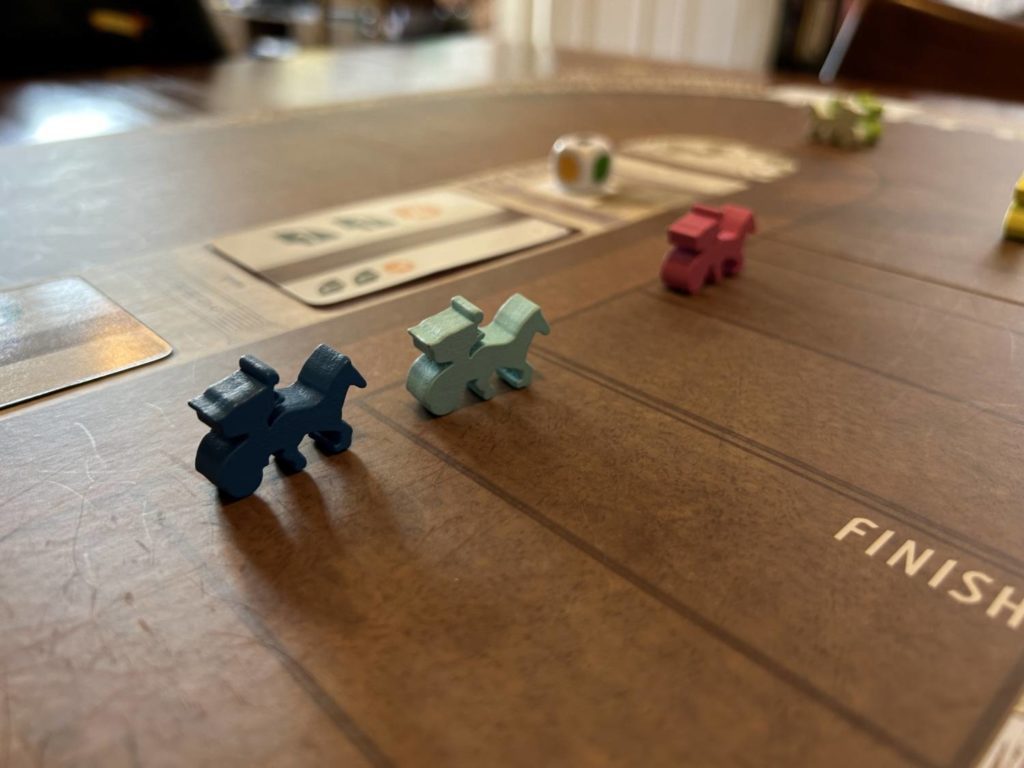
For the Glory of Rome
Pretty well, it turns out!
Each turn, players choose one-to-three cards from their hand of eight. Cards are used for their symbols, which primarily come in one of four varieties, each corresponding to one of the four possible types of moves. Symbols have to match exactly, meaning the numbers are just as important as the colors and shapes. Generally speaking, movement is calculated by adding the numerical value listed in the symbols to the number of matching symbols. That is to say, three green sixes would move you nine spaces on the track.
There are four factors involved in deciding on your move. The first, and most obvious, is what cards you have in your hand. You can’t very well match symbols you don’t have. The second is the Emperor Die, which rewards players for performing a certain type of maneuver. If the emperor is in the mood for some violence, and you do an Attack move, he’ll reward you. The third is the current Crowd Card, which is shown in the middle of the board. Players who use one or more of the symbols on the Crowd Card not only get a small boost from the extra symbol or two, they also receive a Fan Token, which can be used to amp up a future move.

The fourth vector of influence is the type of move that would most benefit you. Each of the four move types has its own perks, so let’s go over those. First, and simplest, is Sprint, represented by the green cyclone. Sprint moves you far, and that’s all it does. Sprint, as you can imagine, is particularly good on those long straightaways.
The red flame is Attack, which deals damage to everyone else on the track. If you combo three cards for an Attack move, you deal one Damage across the board. If you combo four, by pairing three cards from your hand with the current Crowd Card, you deal two Damage. Each Damage Cube in your Damage Box reduces your movement by one. Let them build up, and the impact can be costly.
Fortunately, you can also choose to play the yellow crosses for a Recovery. In addition to moving a moderate distance up the track, Recovery removes half the Damage in your Damage Box, rounded up.
The final move type is the Corner. The values on Corner symbols are significantly weaker than the other types of movements. The most powerful Sprint symbol is a six, for example, but Corners top out at two, meaning you’ll need a great deal of them to move any distance of consequence. That said, with the right timing, a good Corner move can be very powerful.
The outside corners of the track resemble the interleaving black and white keys of a piano. The standard pattern of movement is a zig zag, jumping from a white key to a black key and back again. Corner moves let you skip the black keys. A full corner of the board, roughly 1/4 its length, is immediately reduced from 17 to 8 spaces. That’s significant.

When I said there were four factors, I lied. There are six. I didn’t want to overwhelm you any more than I had to. The fifth influencer is the pool of bonus tokens you have available, which will be a combination of the five tokens you’re given during setup and any Fan Tokens you pick up as a result of using a Crowd Card. The majority of these are straightforward movement bonuses, adding some number of value to your movement total.
The sixth and final piece to be considered is also Charioteer’s fussiest mechanic: Skill.
At the beginning of the game, in addition to your starting hand and your starting bonus tokens, you receive a Skill Card, which sets out the starting order for your Skill Markers. These wooden totems sit on your player board, and go up a slot each time you perform a move of the corresponding type. The middle of the Skill Track is a lengthy stretch of +1 spaces. As long as your Skill Marker is in that area, the corresponding movement type will always be augmented by one movement point. At the end of the track, a steeply-climbing set of values appear. Players who get their Skills to the far end of the track will reap mighty benefits. You can come back from far behind if your Skill is developed enough.
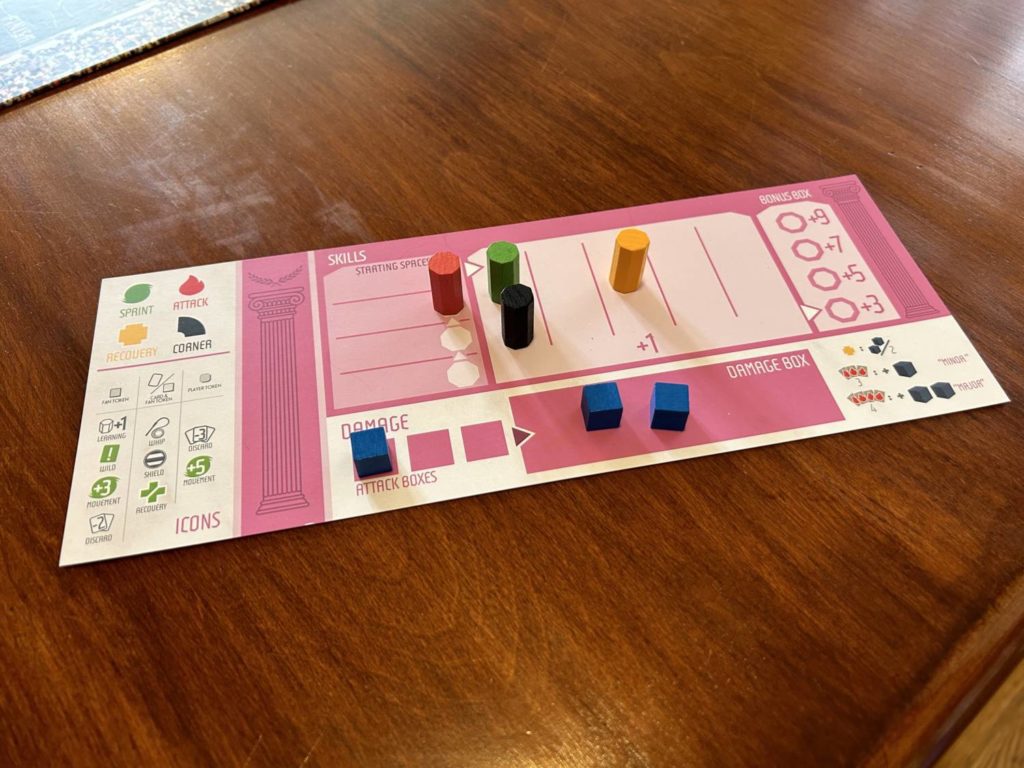
The six factors of deciding on your move come together in ways that are satisfying without—believe it or not—being particularly taxing. Unlike most racing games, Charioteer offers the opportunity to develop a strategy. Will you prioritize matching Crowd Cards, gaining an unending supply of tokens? Will you seek to please the emperor, sacrificing immediate movement for long-term gains? It all works, mind. So long as you play smart, you’re unlikely to get left in the dust.
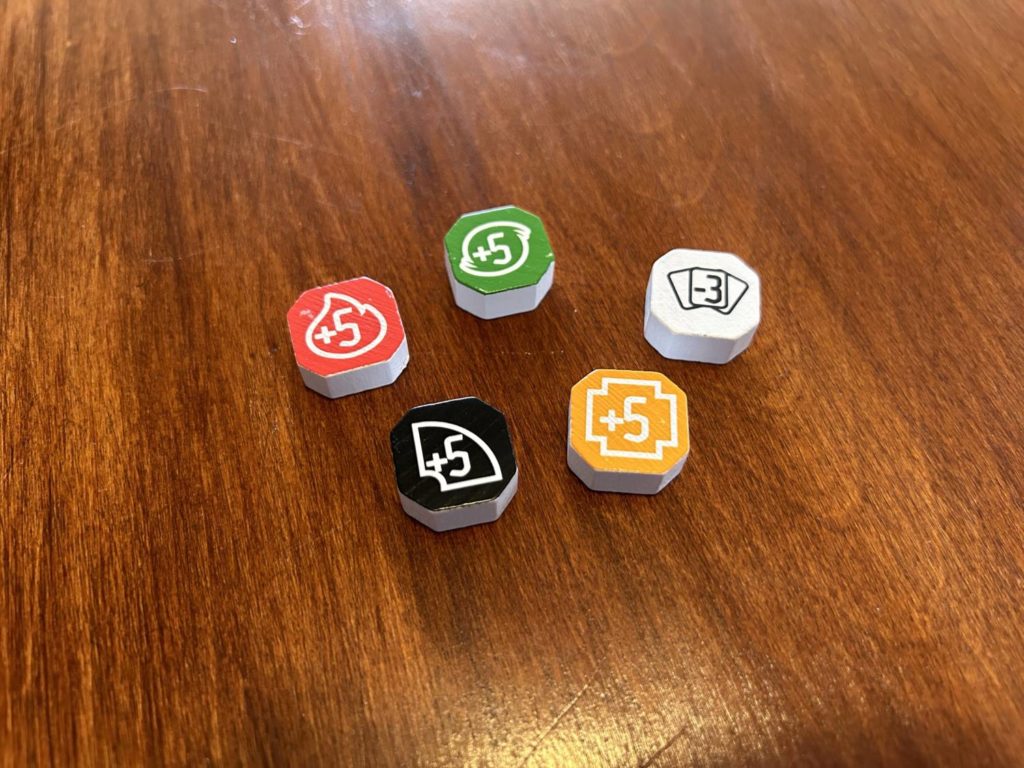
The Finish Line
GMT gives Matt Calkins’ designs a thrilling presentation. They previously produced his Sekigahara, which looks incredible on the table. Charioteer is no different. The race track is enormous, comprising two (2) 17” x 22” boards. Fully set up, the arena is nearly four feet long. That sense of scale alone imparts a good amount of thematic flavor. The amount of space may prove a barrier for some, given that your table needs to hold both the arena and player boards.
Despite the complexity of what I described above, Charioteer does a pretty good job of feeling like a race. Somehow, despite spending each turn remembering to check whether or not you take a Fan Token, advance the appropriate Skill Marker, and check the Emperor Die, and subtract and manage your Damage Cubes, the game feels smooth and coherent. Catching up to an opponent or tearing off ahead of the pack, counting out 12-15 spaces, is satisfying to the lizard portions of the brain.
The design choices inject more choice and intentionality into a relatively straightforward racing game, and for that I am grateful. I have friends who find Flamme Rouge boring. I don’t understand how, but they do. Charioteer is just the game I’d put in front of them if I’m in the mood to laugh, groan, and cheer.
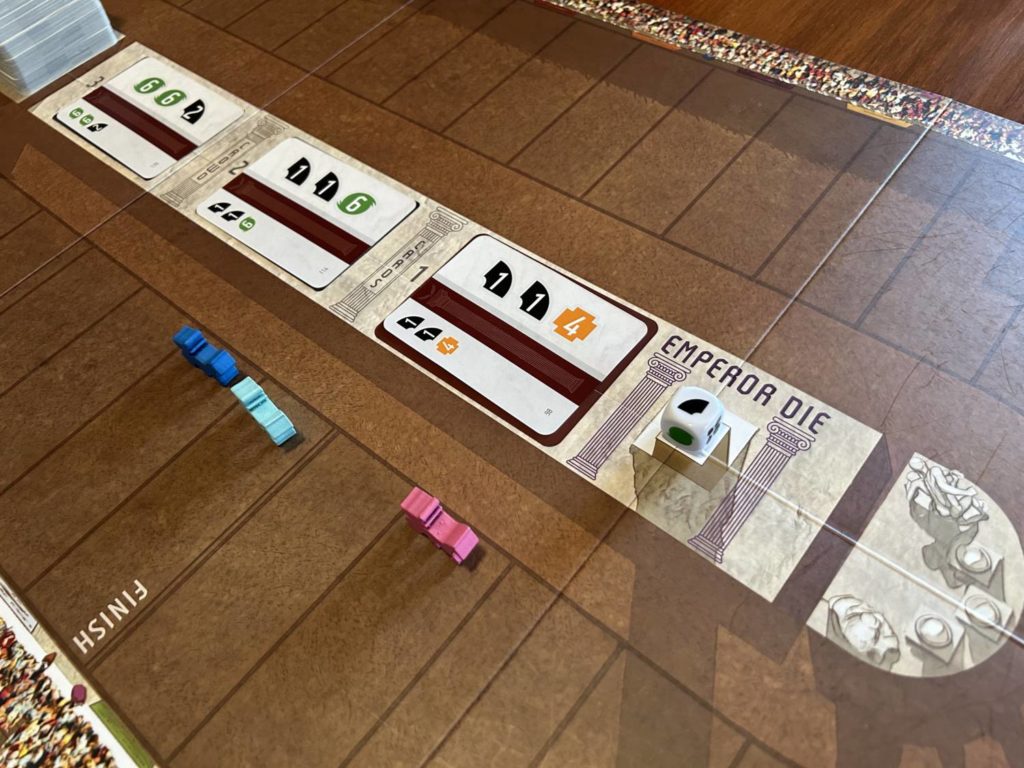


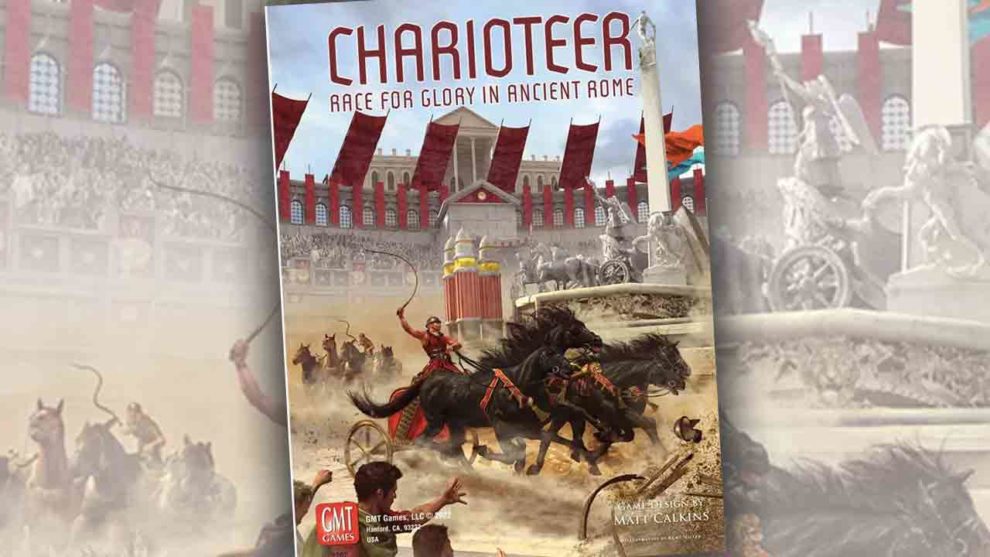



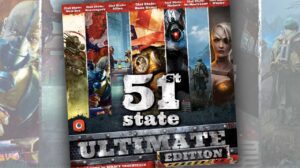
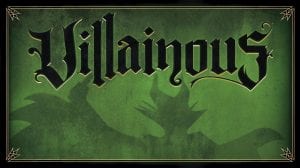




Add Comment